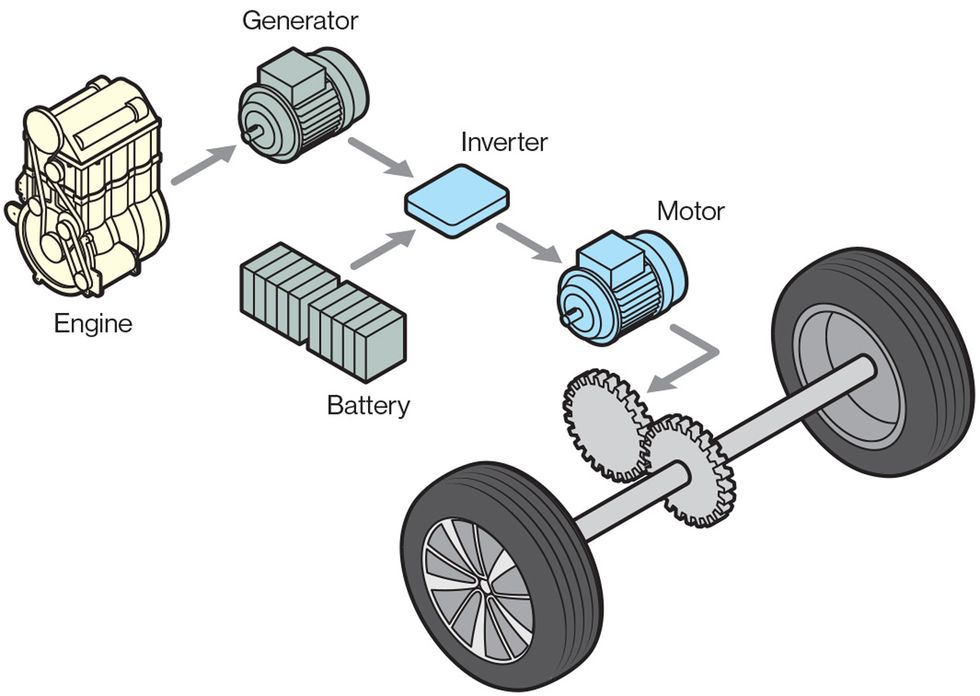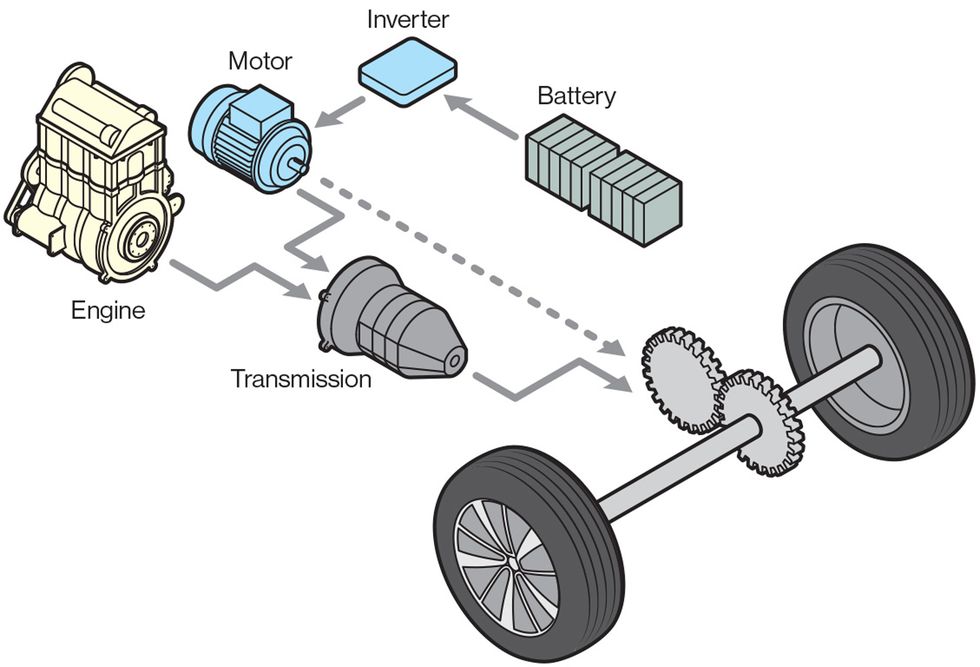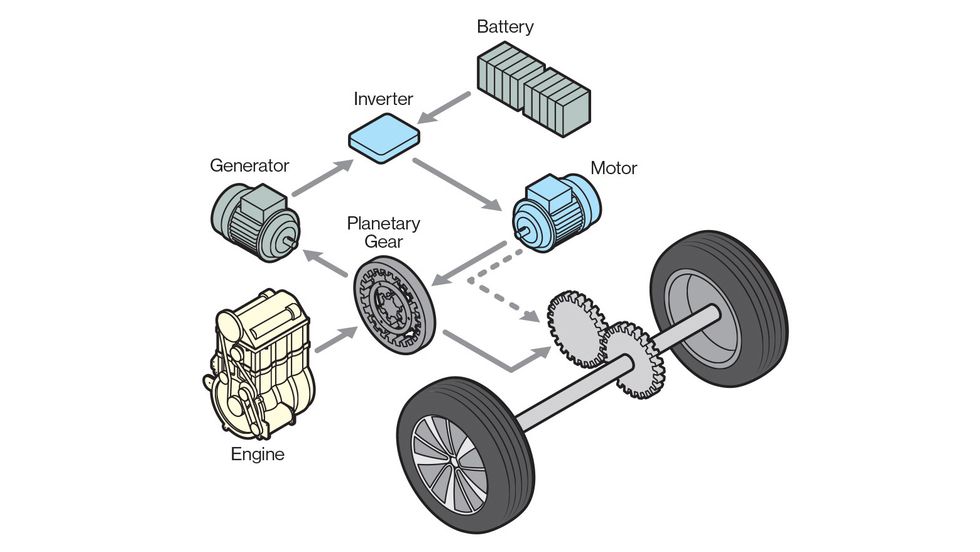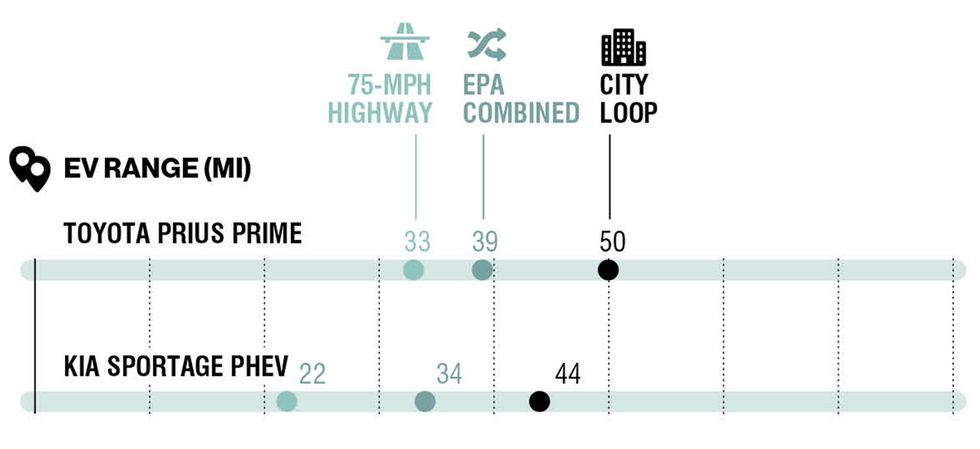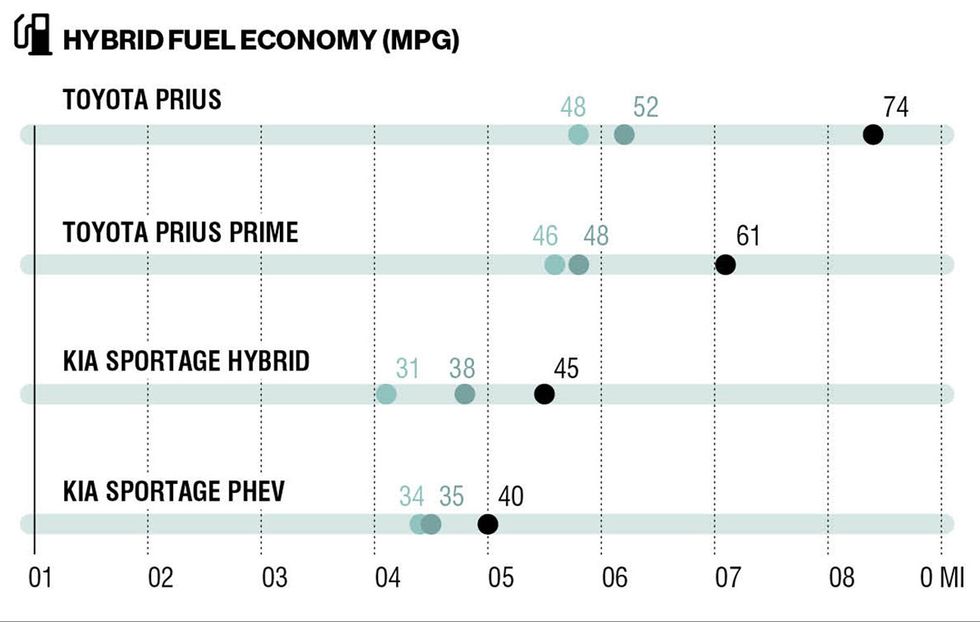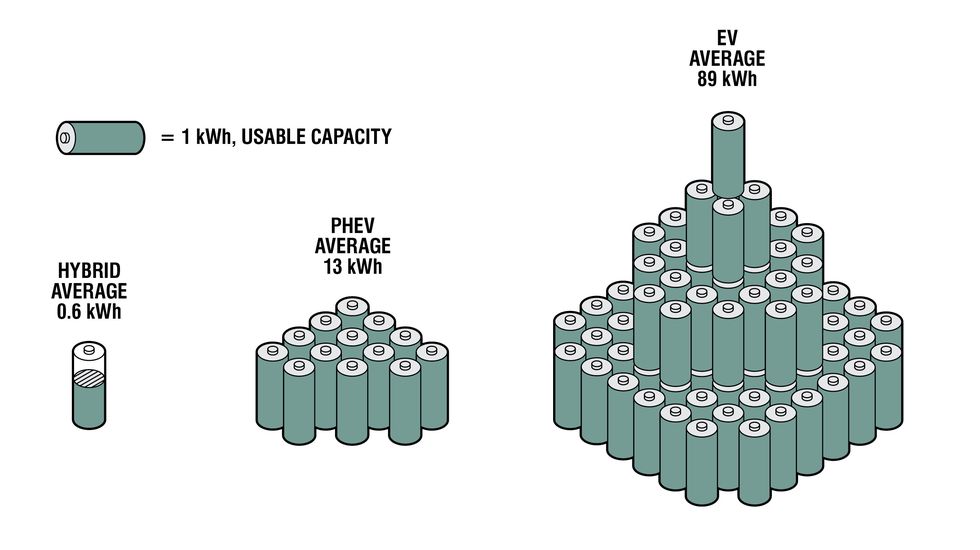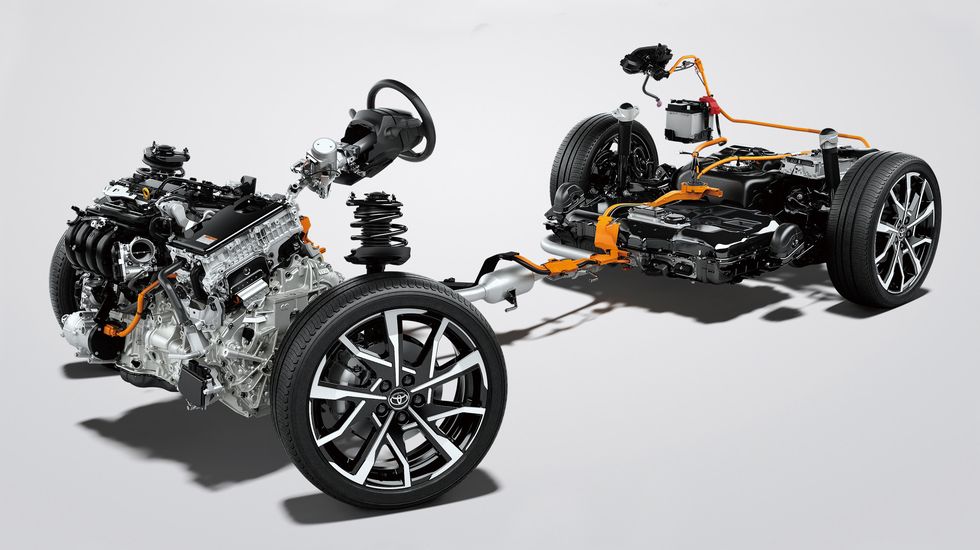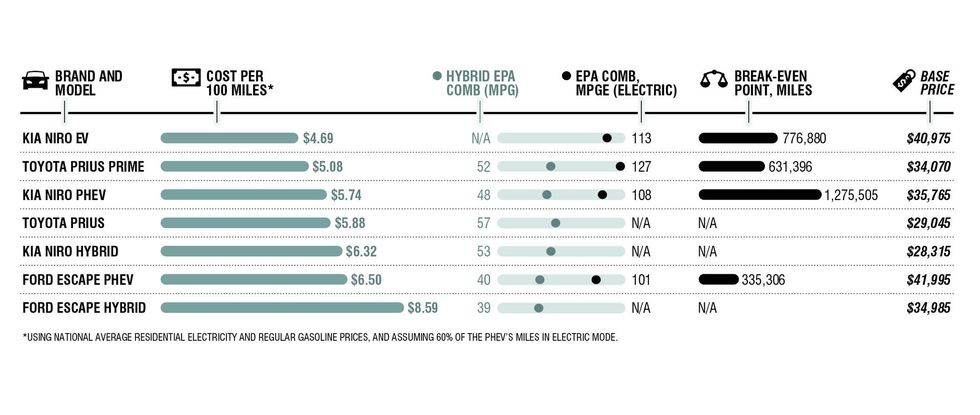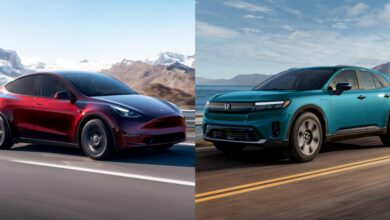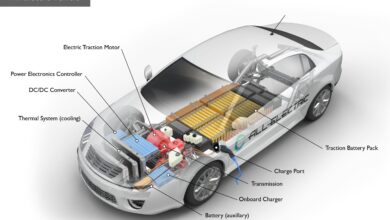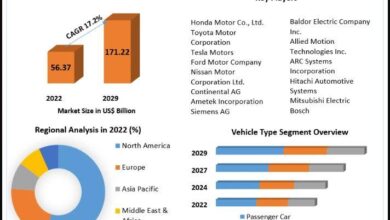Are Plug-In Hybrids Finally Making Good on the Promise of the Best of Both Worlds?
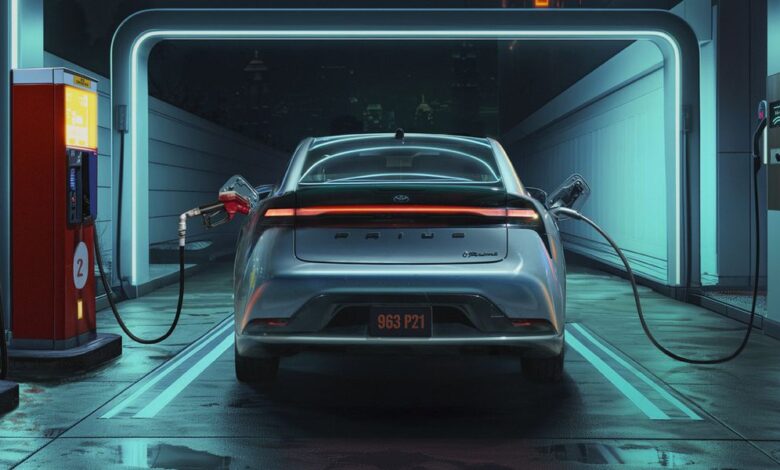
From the May/June issue of Car and Driver.
Although the descriptor is a mouthful, plug-in-hybrid electric vehicles (PHEVs) are a relatively recent powertrain creation, brought to the mass market by the pioneering 2011 Chevrolet Volt. They promise zero-emission electric motoring for shorter trips, with the ability to charge at home and bypass the gas station. They also thrive during long-distance travel, needing only to replenish the gas tank, free of the constraints of EV range, the spotty public charging infrastructure, and long stops for juicing up. It’s kind of like a starter EV with gas-engine training wheels.
PHEVs have considerably larger battery packs than hybrids and more powerful electric motors, enabling greater electric range but adding considerable mass. When you’re operating a PHEV in electric mode, the gas engine is very expensive dead weight. Partially due to the extra heft, PHEVs tend to get substantially worse fuel economy in hybrid mode than an equivalent hybrid does [see “The Penalty of Not Plugging In” below]. And if the outside temperature is too cold or the driver applies too much right pedal, PHEVs often force the gas engine to start. Perhaps unsurprisingly, given the complexity of two commingling propulsion sources, more can go wrong, so PHEVs fare worse than their hybrid brethren in reliability metrics.
PHEVs allow for thrifty electric motoring for short trips but, unlike EVs, they have lazy acceleration when in electric mode, with 60-mph times often in the range of 11 seconds or more (although some are quick in hybrid mode). They make gas-only long-haul travel easy but are less efficient than a standard hybrid and cost more to build and purchase. Plus, buyers seem befuddled by the whole idea: Is it a hybrid? Is it electric? Wait, it’s both? Automakers have contributed to this by sometimes insisting on using different but equally confusing labels for their plug-in hybrids.
So, there’s a case to be made that plug-in hybrids are the best of both worlds. And also just the opposite.
Roll Call
Below, you’ll find all 35 plug-in hybrids currently on sale (as of April 2024) with official EPA figures for fuel economy and battery-electric range. They’re listed in order of highest to lowest electric range, which is a proxy for their usefulness as EVs. As you can see, this has a very weak correlation with price. Expect this list to continue to grow in the near future as plug-in hybrids gain in popularity and additional automakers join the fray. For example, General Motors, which had pledged allegiance to a wholesale jump to EVs, recently put PHEVs back into the plan.
The Many Different Hybrid Layouts
Through-the-road, series, parallel, range extender—all of these terms describe a hybrid powertrain’s layout. To make any of them a plug-in, automakers use a larger battery and program it to maintain enough charge to operate indefinitely. But they all work differently, as you can see in these diagrams.
SERIES: As the name implies, this is a one-then-the-other setup. A gas engine turns a generator, which then feeds a battery or a drive motor. There’s no physical connection between the internal-combustion engine and the wheels. See: Fisker Karma.
RANGE EXTENDER: This is a subset of the series layout, with the only real difference being that these range-extender models are based on electric vehicles. See: BMW i3 Range Extender, Ram 1500 Ramcharger.
PARALLEL: This is the setup most hybrids use today. A clutch and an electric motor replace a transmission’s torque converter. The motor doesn’t have to be integrated with a transmission, but that is by far the most common arrangement. See: Mercedes-Benz S580e, Porsche Cayenne E-Hybrid, Kia Sportage Hybrid, and many others.
POWER-SPLIT: A gas engine pairs with a transmission consisting of two motors and at least one planetary gearset. The car can drive the wheels with one of those electric motors, the gas engine, or both. The second electric motor is used as a generator; it also determines the effective gear ratio for the gas engine. We call these transmissions CVT in specifications, but they’re very different from the CVT in, say, a Nissan Versa. See: Chevrolet Volt, Toyota Prius (all).
THROUGH-THE-ROAD (NOT SHOWN): These hybrids typically take a front-wheel-drive powertrain and add an electric motor to the rear axle. There’s no driveshaft to the rear and no connection between the gas and electric powertrains. See: Volvo T8 models, all-wheel-drive Toyota and Lexus hybrids (but they also have a power-split hybrid powertrain on the front axle).
Mild Hybrid
Honda’s first hybrids used tech that the company called IMA, for Integrated Motor Assist. It was a parallel setup, but IMA alone couldn’t power a vehicle. Toyota marketers took umbrage with the less capable Insight beating the Prius to market in the U.S. and dubbed it a “mild hybrid.” That term stuck, and today the many low-voltage (48-volt) hybrids that can’t move on electric power alone are described that way. See: Ram 1500 eTorque, numerous BMW models.
More Powertrain Complexity, More Problems
Both J.D. Power and Consumer Reports document lower reliability figures for PHEVs versus hybrids or internal-combustion-engine vehicles, and it stands to reason that having the complexity of two different propulsion sources could cause some additional bugaboos. J.D. Power’s Frank Hanley, senior director of auto benchmarking, confirms that PHEVs have a higher incidence of check-engine lights but explains that the problems extend beyond the powertrain. PHEVs tend to have more features and content, and many of the issues are related to infotainment or problems with the mobile app, which PHEV owners tend to use more frequently to take advantage of features such as scheduling charging or cabin preconditioning. But not all PHEVs are equal. Hanley says, “Toyota PHEVs are better than average.”
The Penalty of Not Plugging In
With today’s onboard telematics, automakers know precisely how frequently (or infrequently) owners are plugging in their PHEVs, and the fact that they aren’t sharing the data means it’s probably less often than ideal. That’s an issue for the owners’ pocketbooks, because a PHEV operated in gas-electric hybrid mode is generally less efficient than the equivalent hybrid model. For example, the most efficient Prius Prime (the PHEV model) gets a 52-mpg EPA combined rating in hybrid mode, while an equivalent front-drive Prius scores as high as 57 mpg.
To test this, we drove two pairs of vehicles—a Kia Sportage hybrid and PHEV and a Toyota Prius and Prius Prime—on a city loop and our 75-mph highway route with the goal of mimicking a regular flow of traffic, not hypermiling. Our urban venue was roughly 200 miles through Orange County, California, with plenty of stop-and-go that led to average speeds of around 25 mph. On the city loop, the Sportage hybrid beat the PHEV in hybrid mode by more than 10 percent, while the Prius beat the Prime by more than 20 percent, scoring an astounding 74-mpg average. The differences weren’t as large on the highway, but the hybrids still beat the plug-ins. In terms of EV range, it is no surprise that the city loop beat the EPA estimate for both vehicles, while the highway run fell short of the window-sticker value.
Battery Size and Cycling
While PHEVs’ battery packs are, in some ways, a scaled-down version of what powers electric vehicles, there’s more to it. For example, while an EV’s pack might need to endure 1000 or so charge-and-discharge cycles, a PHEV’s battery cycles far more frequently. That means it needs to survive around 5000 or more cycles. To cope with these demands and maintain battery life, PHEVs use a smaller fraction of the battery’s gross capacity for propulsion than EVs do.
Currently, the average EV has a battery pack with around 100 kilowatt-hours of energy, and the usable capacity is approximately 90 percent of that total. PHEV battery packs average about 16 kilowatt-hours but use a smaller fraction of that energy, closer to 80 percent. Non-plug-in hybrids, with battery packs averaging just over 1 kilowatt-hour, may tap into only 50 percent of that power to handle the magnitude of cycles required by these vehicles as those batteries constantly charge and discharge while you’re driving. The electrodes and chemical coatings on the cells that make up the battery pack are also adjusted for these different power and cycling requirements.
A side benefit of a PHEV’s smaller pack is that you may get a full charge overnight on a regular household 120-volt outlet—no 240-volt upgrade required. Most PHEVs support charging only via AC power, which makes sense, because if you want to drive a lot of miles quickly, you could simply use the gas engine. For those who are willing to deal with public charging to replenish a few electric miles, the Mitsubishi Outlander PHEV’s 20.0-kWh battery has optional DC fast-charging capability via a not-always-easy-to-find CHAdeMO connection. The Mercedes-Benz S580e offers optional DC fast-charging too.
Don’t Call Me a PHEV
Automakers are complicit in some of the confusion about PHEVs. Chevy insisted on calling the Volt an “extended-range electric vehicle” or “E-REV” rather than a PHEV. And Ram refuses to use the PHEV label on its new Ramcharger pickup, instead calling it a “range-extended electric truck.” Elsewhere in the Stellantis empire, Chrysler oversimplifies by labeling the PHEV Pacifica simply “hybrid.” At least Jeep accurately describes its 4xe vehicles as PHEVs.
How Long Does It Take to Pay Back Higher PHEV Prices?*
Those looking for a purely financial reason to choose a PHEV will be disappointed. But cost comparisons among hybrids, PHEVs, and EVs are complicated by the fact that almost no automaker offers all three powertrain types in the same model line. So, we crunched the numbers on the Kia Niro, one of the few models available all three ways.
Assuming a 60 percent mix of electric miles, the Niro PHEV costs 5.7 cents per mile based on national average prices for gas and electricity and EPA combined mileage figures. While that’s nearly 10 percent less expensive than the hybrid, saving a fraction of a penny per mile means it would take more than a million miles to make back the $7450 price difference. But the PHEV starts at the EX trim level, so comparing like trims pares the price difference to $4750, although the payback period is still far longer than one vehicle lifetime. Even assuming 100 percent electric miles only cuts the break-even point to about 335,000 miles. Use gas and electric prices from a high-cost state like California, where fuel is 39 percent more expensive and electricity costs 85 percent more, and the numbers just get worse. For the electric, the Niro EV costs $12,660 more than the base hybrid, so it’s no surprise that the payback math isn’t kind at over 775,000 miles.
However, unlike hybrids, PHEVs also potentially qualify for federal tax incentives, just like EVs. Currently, only the Chrysler Pacifica minivan is eligible for the maximum $7500, while a handful of others from Audi, Ford, Jeep, and Lincoln qualify for $3750. For example, the price difference between a Ford Escape hybrid and PHEV is $7010, but the $3750 tax kickback would cover more than half of the upcharge, shrinking the payoff period to about 156,000 miles.
*Generally speaking, EVs are cheaper to maintain but cost more to insure. Since both of these variables depend on location and driver, we omitted them from the calculation.
Won’t the Fuel Go Bad?
If the thought of fuel sitting in the tank unused for an extended period has you reflexively reaching for a bottle of Sta-Bil, calm down. The Prius Prime owner’s manual states that to keep the gas fresh, the engine needs to burn only half a tank per year—that’s 5.3 gallons, good for about 275 miles of hybrid running. If the owner fails to meet this threshold, a warning light comes on.
Dave VanderWerp has spent more than 20 years in the automotive industry, in varied roles from engineering to product consulting, and now leading Car and Driver‘s vehicle-testing efforts. Dave got his very lucky start at C/D by happening to submit an unsolicited resume at just the right time to land a part-time road warrior job when he was a student at the University of Michigan, where he immediately became enthralled with the world of automotive journalism.
K.C. Colwell is Car and Driver’s executive editor, who covers new cars and technology with a keen eye for automotive nonsense and with what he considers to be great car sense, which is a humblebrag. On his first day at C/D in 2004, he was given the keys to a Porsche 911 by someone who didn’t even know if he had a driver’s license. He also is one of the drivers who set fast laps at C/D‘s annual Lightning Lap track test.

